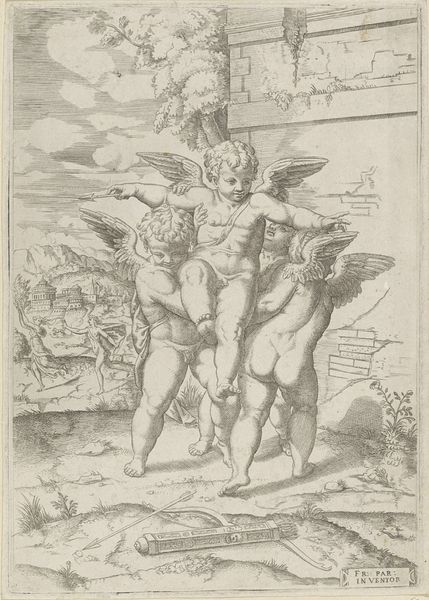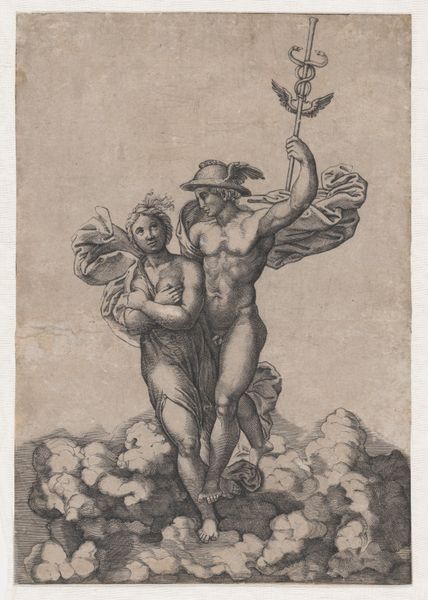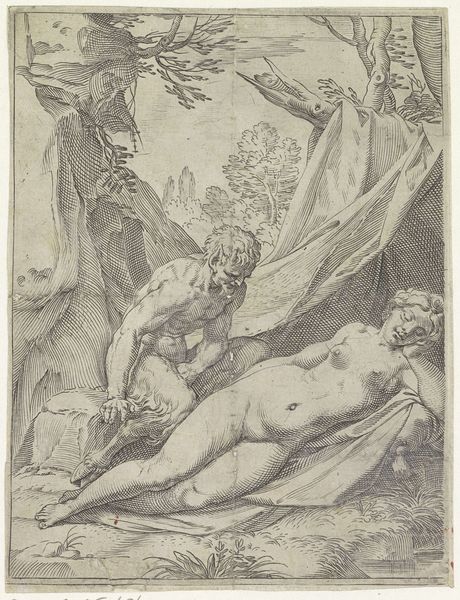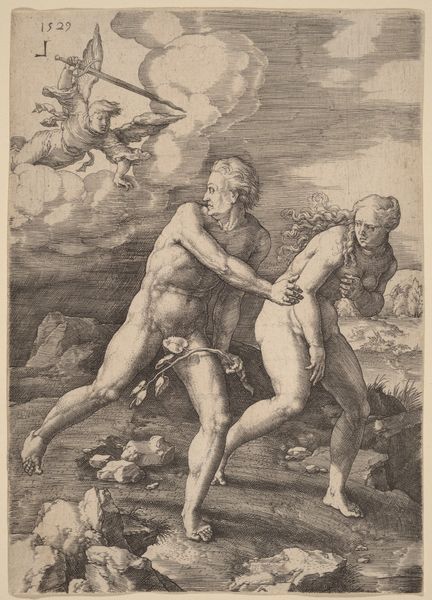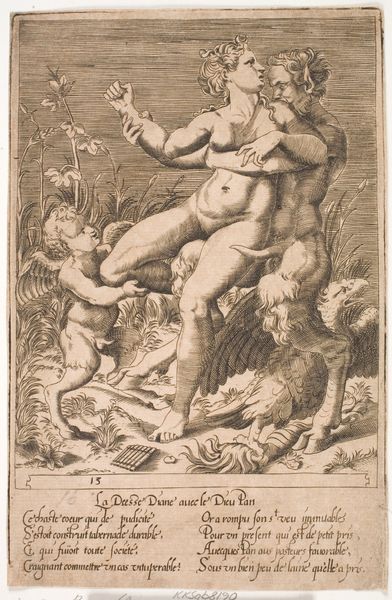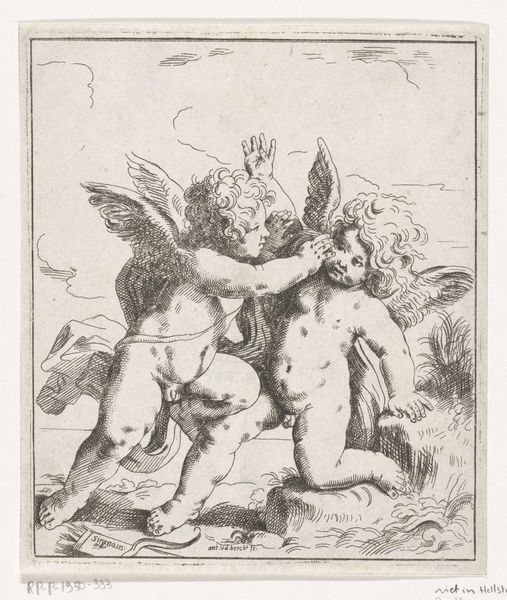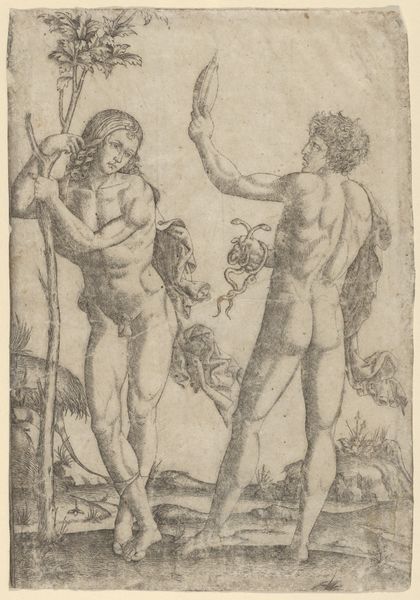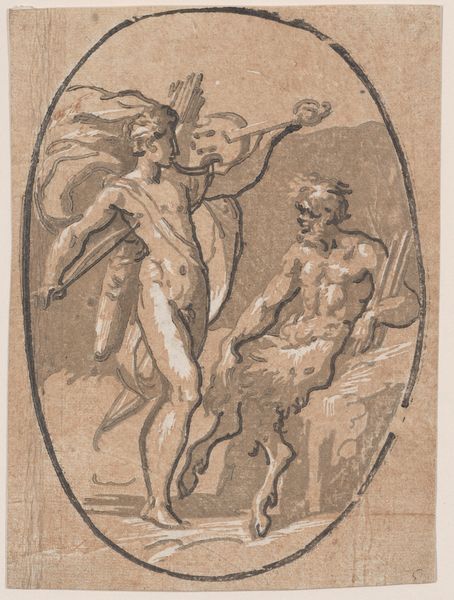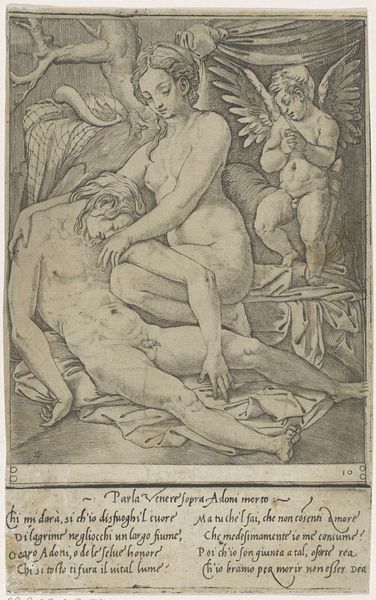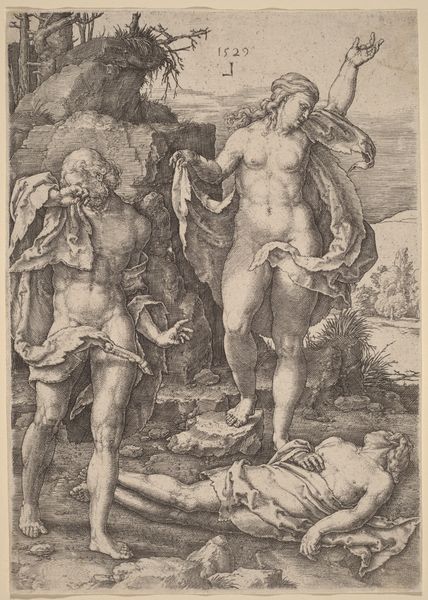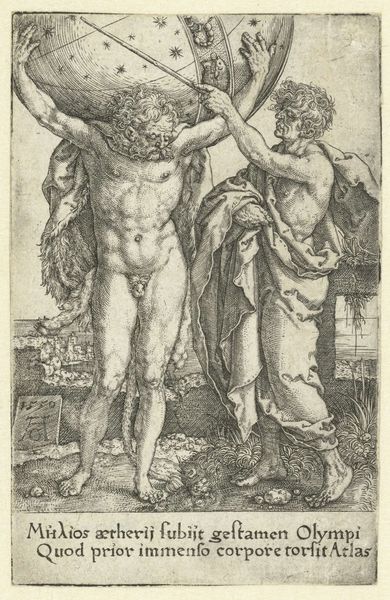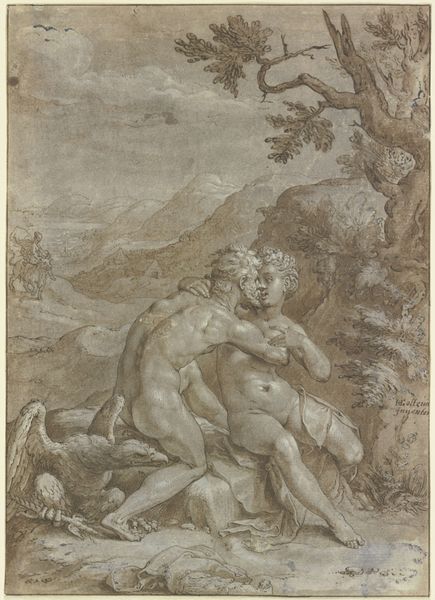
drawing, pencil
#
drawing
#
allegory
#
pencil sketch
#
landscape
#
figuration
#
11_renaissance
#
pencil drawing
#
pencil
#
italian-renaissance
Dimensions: height 315 mm, width 215 mm
Copyright: Rijks Museum: Open Domain
Curator: Here we have "Amor en drie putti," a Renaissance drawing by Giulio Bonasone, likely created between 1501 and 1580. Editor: What strikes me is how sculptural it feels for a drawing. The stark pencil lines create such defined forms, especially in the putti figures themselves. There's a real sense of depth here. Curator: Yes, Bonasone really knew how to handle form, light, and shadow with a simple pencil. And consider how the figure of Cupid and his attendants play within a broader cultural fascination with classical antiquity that we see in 16th-century Italy. It represents more than just artistic skill, it encapsulates intellectual movements. Editor: Speaking of classical, the landscape is intriguing. While softly rendered, the distinct architecture in the background offers this echo of the ancient world. And below, near the front, that quiver, discarded, implying Cupid's abandonment or relinquishing of power? Curator: Precisely! The symbolism plays heavily on allegorical notions. Cupid, god of love, assisted by three putti - representing desire, pleasure and whimsy - shows an evolving view of the classical myth and love itself within that culture. But also, note the placement of the figures, almost suspended within the image—an artistic interpretation of ideals. Editor: Indeed, and even the positioning of the figures themselves, the straining posture of the supporting putti contrasts sharply with the effortless repose of Cupid aloft. There’s something compelling in the compositional contrast between tension and serenity. Curator: Beyond aesthetics, it illustrates the evolving social role of love during this era, and its public articulation through artwork displayed in the Renaissance court and beyond. Editor: It’s funny, when you look at the drawing close, and see that slightly awkward foot placement of the upper putto... almost humorous, an earthiness grounded against an ideal backdrop. Curator: That perceived imperfection, within a cultural obsession with perfection, humanizes a deity and elevates a drawing’s symbolic value for interpreting an era. It leaves us to question what 'Love's Allegory' can mean. Editor: I will carry those structural echoes – tense balance and stark forms – forward, but you make me ponder who the artist wanted to delight in seeing this tableau of desire and whimsy.
Comments
No comments
Be the first to comment and join the conversation on the ultimate creative platform.
